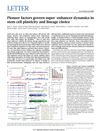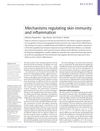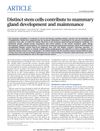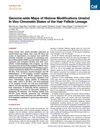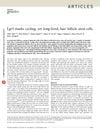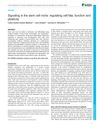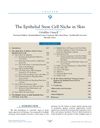Stem Cell Heterogeneity and Plasticity in Epithelia
May 2015
in “
Cell Stem Cell
”
stem cells epithelia epithelial niche transcription factor networks epidermis hair follicle tumor niches cancer stem cells fibroblasts immune cells epigenetic factors homeostasis FISSEQ epithelial organoids skin cells hair follicle cells cancer cells immune system cells gene regulation cell homeostasis organoids
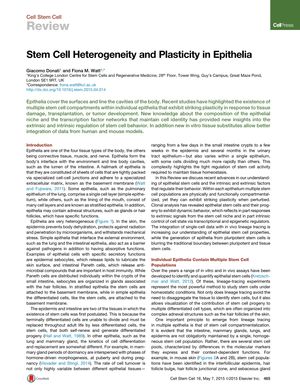
TLDR Different types of stem cells exist within individual skin layers, and they can adapt to damage, transplantation, or tumor growth. These cells are regulated by their environment and genetic factors. Tumor growth is driven by expanding, genetically altered cells, not long-lived mutant stem cells. There's evidence of cancer stem cells in skin tumors. Other cells, bacteria, and genetic factors help maintain balance and contribute to disease progression. A method for growing mini organs from single cells has been developed.
The 2015 review "Stem Cell Heterogeneity and Plasticity in Epithelia" discussed the existence of multiple stem cell compartments within individual epithelia, their significant plasticity in response to tissue damage, transplantation, or tumor development, and the role of the epithelial niche and transcription factor networks in regulating stem cell behavior. The authors noted the development of in vitro tissue substitutes for better data integration from human and mouse models. They emphasized the heterogeneity of stem cells within individual epithelia, with different stem cell populations identified in various parts of the epidermis and hair follicle. The study also revealed that tumor growth is driven by the expansion of genetically altered clones that adapt and proliferate in tumor niches, and not derived from long-lived mutant stem cells. The researchers found evidence for the existence of cancer stem cells in epithelial tumors. The document also discussed the role of fibroblasts, immune cells, bacteria, and transcription and epigenetic factors in maintaining homeostasis and contributing to disease progression. The study highlighted the development of a method called FISSEQ for growing epithelial organoids from single cells and recreating the differentiated lineages present in normal tissue, including hair follicles.
